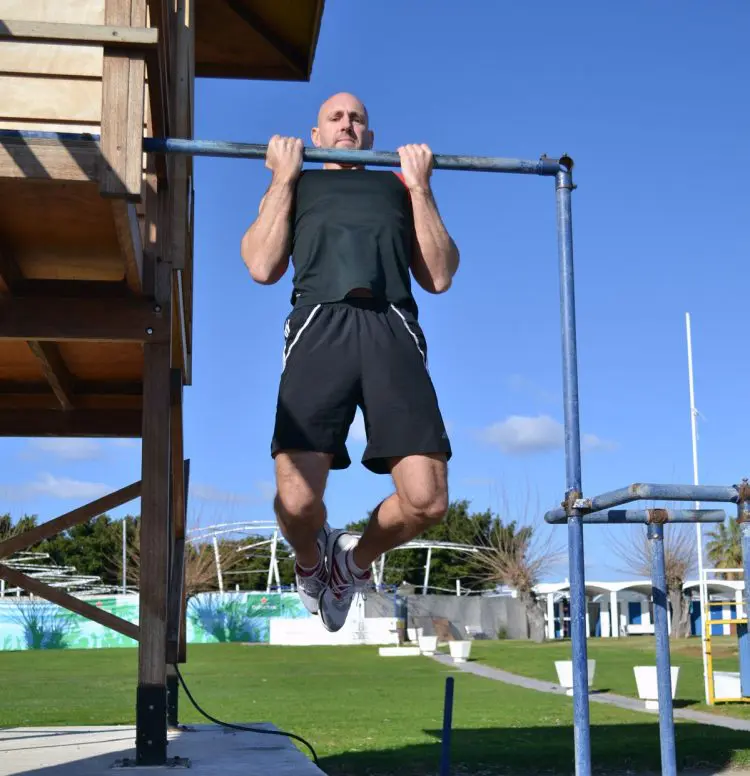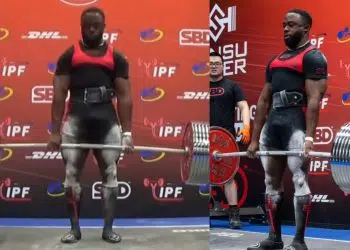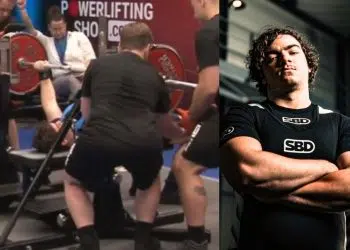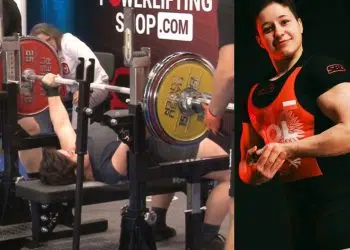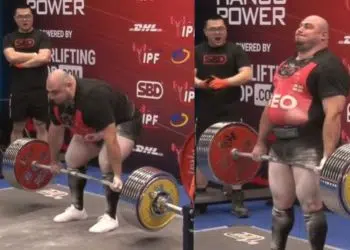There are a number of key factors that influence your strength performance but few as significant as your physical training.
In order to improve your performance with the squat, bench, and deadlift, it makes sense to perform these lifts with great frequency.
While this is undoubtedly true, you can and should be doing more than just three exercises. This will help to develop your strength and performance much more efficiently.
This article will begin by highlighting the importance of accessories before highlighting five key accessories that you should consider adding to your training program.
Why Your Training Needs More Than “The Big Three”
Yes – the big three will help you build strength. There is absolutely no doubt about it.
With traditional powerlifting training, you will likely do some “accessory” work, however, these tend to come in the form of variations of the big three.
Level Up Your Fitness: Join our 💪 strong community in Fitness Volt Newsletter. Get daily inspiration, expert-backed workouts, nutrition tips, the latest in strength sports, and the support you need to reach your goals. Subscribe for free!
For example, pin or paused squats, the board press for the bench, and the rack pull for the deadlift. However, if you want to optimize your performance and pull the greatest amount of weight possible, you need to look beyond the big three and their variations.

Consider this. The more muscle you can pack on, the more weight you will be capable of lifting (1).
Therefore, it makes sense to use accessory exercises that can help to build muscle in key areas thus enhancing your performance.
Additionally, you may have heard the phrase “you are only as strong as your weakest link”. To optimize performance, you need to work on your weaknesses and eliminate them.
Creating a greater balance of strength between muscle groups is undoubtedly going to have a positive impact on your strength performance.
Finally, working on muscle activation or “feeling” the muscle, can go a long way. Improving muscle activation will increase the number of motor units recruited thus allowing you to lift increasingly heavy weight. When it comes to the powerlifts, the focus is primarily on performing the movement rather than focusing on working the muscles of the body.
Accessory exercises give us an opportunity to focus on improving the mind-muscle connection of key muscles. Improving this connection can have a significant impact on strength performance (1).
The Five Accessories
So now that you have a greater understanding of accessory exercises and why they are important for powerlifters, let’s consider five that you should consider adding to your training.
1) Pull-Ups / Chin-Ups
The pull-up and chin-up are both deceptively challenging. It takes time and patience to develop these exercises, however, they make a valuable addition to your training.
Most powerlifters tend to avoid the pull-up as it is not seen as a particularly useful exercise.
Nonetheless, the pull-up is one of the best exercises that you can perform to help you improve back strength and generally develop upper body pulling power.
Performing a pull-up using bodyweight only can be challenging enough. However, if you require a greater intensity, you can perform weighted pull-ups with the use of a dipping belt.
The exercise hits an array of back muscles including the lats, rhomboids, and traps, as well as working the rear deltoids and biceps.
These muscles play key roles in all three powerlifts. Developing upper body strength and pulling power in this way may directly facilitate improved performance with the bench and the deadlift.
Furthermore, in order to effectively lift the bar and maintain good form, these muscles powerfully contract to enhance full-body stability, prevent spinal rounding, and facilitate an efficient lift.
Pull-Up / Chin-Up Technique:
- For pull-ups, use an overhand grip and place hands on the bar at slightly wider than shoulder-width
- For chin-ups, use an underhand grip and place hands on the bar at shoulder-width
- Assume a hang ensuring that the legs remain fully extended and ensure that your head does not sink down into your shoulders by pulling your shoulders down and back
- Before initiating the pull, focus on pushing the chest up and engage the core muscles
- Powerfully pull the body vertically towards the bar
- Continue pulling until the upper chest is in line or makes contact with the bar
- In a controlled fashion, lower the body until to reach a full hang once again
[Related: Pull-Ups Vs. Chin-Ups – Which One is Right for You?]
2) Dips
When it comes to chest and arm development, few can compare to the mighty dip.
As with the pull-up, this is a bodyweight exercise that may raise a few eyebrows. However, you can increase the load by using a dipping belt which allows you to attach and suspend weight.
The mechanics of dips mean that a substantial demand is placed on the pectorals and triceps.
By incorporating the dip into your training program, it is possible to significantly improve the strength and activation of these muscles.
Considering that the bench press also works the pectorals and triceps, the dip is likely to have a positive knock-on effect on your benching performance.
Level Up Your Fitness: Join our 💪 strong community in Fitness Volt Newsletter. Get daily inspiration, expert-backed workouts, nutrition tips, the latest in strength sports, and the support you need to reach your goals. Subscribe for free!
A further benefit of the dip is that it provides a type of training stimulus that is different from the bench as the pressing motion of the dips is very different to that of the bench press.
Being strong across multiple planes and angles is extremely important and it is highly valuable when it comes down to performing maximal lifts.
Dips Technique:
- If using a dipping belt, ensure that the belt and the weight are both securely fastened before performing the set-up
- Using a dip station, grip the handles – they should be positioned slightly wider than shoulder-width
- Engage your core, lift your chest, and extend through the elbows to lift the body from the floor
- In this suspended position, bend the knees to 90 degrees
- While maintaining a core brace, hinge at the elbows to drop down in a controlled manner
- Continue to descend until you create a 90-degree angle at the elbows
- Powerfully extend the elbows to drive the body back up to the starting position
3) Seated Shoulder Press
Improving shoulder strength and size should be a priority for all powerlifters.
Increasing shoulder and upper back size will provide a better “shelf” for the bar to sit on during squats.
For the bench press, shoulder stability is highly important. Having weak and unstable shoulders is not conducive to successful lifts. Furthermore, it may contribute to an injury.
Finally, for the deadlift, enhancing mass and muscle activation may allow you to generate a greater amount of tightness in the upper body, thus enhancing stability and preventing rounding.
While the shoulder press can be performed either seated or standing, the seated variation increases stability and consequently places a greater demand on the muscles of the shoulders (3).
That said, standing can be useful too as it will place more of an emphasis on core and shoulder stability.
Seated Shoulder Press Technique:
- This exercise can be performed using either a barbell or dumbbells
- Begin by sitting on the bench with the knees bent to 90 degrees and feet flat on the floor
- If using a barbell, place the hands on the bar using an overhand grip that is slightly wider than the shoulders – the bar should align with the upper chest
- If using dumbbells, bring the dumbbells up to the outside of the shoulders with palms facing out
- Ensure the chest is lifted and squeeze the core muscles
- Powerfully press the weight straight up so that the weight finished overhead
- Control the descent of the weight back down to the shoulders
[Related: How To Do Seated Barbell Overhead Press]
4) Lunges or Bulgarian Split Squats
As touched upon, if you want to get stronger, it’s essential that you work on your imbalances and weak points.
Having one stronger side stronger than the other can negatively impact performance while also increasing your risk of injury (4).
One superb method to identify imbalances is to perform unilateral (single-limbed) exercises.
The lunge and Bulgarian split squat are two lower-body unilateral exercises that you can use to balance out the strength and stability of both the right and left leg.
Both exercises share similar characteristics and work similar muscle groups.
The main difference between the two exercises is that, with the lunge, both feet remain in contact with the floor while the rear foot is elevated in the Bulgarian split squat.
Lunge Technique:
- Start with the feet directly under the hips
- Either hold weights in both hands by the hips or place a barbell on the upper back
- Drive the chest up and engage the core
- Take a step forward with the right foot and plant your foot firmly on the floor
- Bend both knees to drop the back knee down towards the floor
- Focus on driving hard through your front leg to propel you back up to standing
- Repeat on the left side
[Related: Lunges vs. Squats – Which Exercise is Best?]
Bulgarian Split Squat Technique:
- Set up a bench directly behind you
- While holding weights in your hands by your hips or with a bar on your upper back, extend your right leg back and place the top of the foot on the edge of the bench
- Keep your left foot flat on the floor, lift the chest, and squeeze the core muscles
- Under control, bend both knees simultaneously to drop the back knee down towards the floor
- Once you’ve descended deeply, drive powerfully through the front leg and return to the starting position
- Complete the prescribed number of reps before swapping sides and repeating
[Related: The Bulgarian Squat Method (Program with Spreadsheet)]
5) Rear Delt Isolations
The rear deltoids make up one of the three shoulder heads. While this muscle is relatively small, it has a hugely important role to play.
These muscles primarily work to generate movement around the shoulder and maintain good joint stability.
As a result, increasing the size and function of these muscles will generally improve shoulder function and reduce injury risk.
You should look to train your rear delts regularly. There are an array of effective rear delt isolation exercises to choose from.
These include exercises such as the rear delt fly, face pull, banded pull aparts, and bent rows. The rear delt fly is one of the most popular rear delt exercises…
Dumbbell Rear Delt Fly Technique:
- Begin by sitting on a bench with your knees bent at 90 degrees and feet flat on the floor
- Place two weights on the floor by the sides of your feet
- Bend forward to bring your torso down on top of your legs and lift the weights from the floor
- Brace your core before beginning the movement
- Keeping the arms straight, drive the weights out to the sides
- At the top of the movement, squeeze tightly between the shoulder blades
- In a controlled motion, return the weights to the starting position
Final Word
If you want to be competitive at meets, you must get your training right. Following a plan that focuses only on the squat, bench, and deadlift will help you get strong, but a more comprehensive plan that incorporates accessory work will reap greater rewards.
References:
1- Krzysztofik, Michal; Wilk, Michal; Wojdała, Grzegorz; Gołaś, Artur (2019-12). Maximizing Muscle Hypertrophy: A Systematic Review of Advanced Resistance Training Techniques and Methods. International Journal of Environmental Research and Public Health. 16 (24).
2- Calatayud, Joaquin; Vinstrup, Jonas; Jakobsen, Markus Due; Sundstrup, Emil; Brandt, Mikkel; Jay, Kenneth; Colado, Juan Carlos; Andersen, Lars Louis (2016-03). Importance of mind-muscle connection during progressive resistance training. European Journal of Applied Physiology. 116 (3): 527–533.
3- Saeterbakken, Atle H.; Fimland, Marius S. (2013-07). Effects of body position and loading modality on muscle activity and strength in shoulder presses. Journal of Strength and Conditioning Research. 27 (7): 1824–1831.
4- Kang, Sung Hwun; Kim, Cheol Woo; Kim, Young Il; Kim, Kwi Baek; Lee, Sung Soo; Shin, Ki ok (2013-7). Alterations of Muscular Strength and Left and Right Limb Balance in Weightlifters after an 8-week Balance Training Program. Journal of Physical Therapy Science. 25 (7): 895–900.

